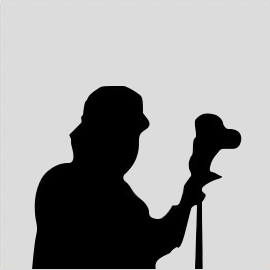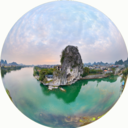0 Likes
...





Overview and HistoryThe history of Vienna is synonymous with that of Europe's biggest empire, so hang on to your weiner schnitzel.Vienna was named "Vindomina" by Celtic tribesmen around 500 B.C. The Romans called it "Vindobona", which means "good wine," and some remains from the Roman garrison there can be found at Hoher Market. Since it was on the outskirts of the Roman Empire, it suffered much chaos and destruction during Volkerwanderung (AKA "let's pillage").Throughout the later Middle Ages Vienna lived under the rule of the Babenberg family. They steadfastly warded off those persistent Mongolian raiders who keep popping up just when you least expect them.During the third great Crusade (1192 A.D), Richard the Lionhearted was captured near Vienna and held for a ransom most foul which amounted to eleven tons of silver! This tidy sum was collected from England and used for the creation of a mint and city walls, major steps in Vienna's ascension to proper city status.Good old kidnapping, who can get enough of it? You can still see remains of these city walls in the metro stop at Stubentor.1278 A.D. marked the beginning of Hapsburg rule over the Austrian lands, snatched from the clutches of Bohemian King Otokar II. This reign would last almost seven centuries and grow to be Europe's largest empire.Vienna twice defended against Ottoman attackers in the 16th and 17th centuries. As the story goes, the Viennese strained coffee technique traces its roots back to these Turks, who left sacks of coffee beans in the wake of their hasty retreat.Emperor Josef II granted freedom of religious expression in 1781, immediately attracting the likes of Mozart, Haydn and Beethoven. These composers created masterpieces of western music in service of the blossoming Viennese opera houses and concert halls.Vienna officially became capital of the Austrian Empire in 1804, of the Austro-Hungarian Empire after 1867, and capital of First Austrian Republic after WWI. The Hapsburg dynasty ended in 1918 with the assassination of Franz Ferdinand, which launched WWI.Between the two World Wars, Austria experienced a revolution (the February Uprising) and autocratic government. Austria was captured by Germany and then Russia during WWII, but emerged as a sovereign nation again at the end of the war. However, it remained a divided and occupied city for another ten years, a period when international espionage cloaked more than a dagger or two within its four bristling regions.In recent history Vienna has become like a second capital of Europe after Brussels. In the 1970's Vienna built the Vienna International Center, a complex to house one of the four United Nations offices. Along with the UN, this complex houses OPEC headquarters, the International Atomic Energy Agency, the Nuclear Test Ban Organization, and the Organization for Security and Cooperation in Europe. Did you know that OSCE is the world's largest intergovernmental organization?I wonder what Sigmund Freud would say?Getting ThereVienna International Airport is connected to the city by a sixteen minute train ride on the CAT system. Eight Euros and you're there! TransportationVienna has a smooth, well-built public transportation system. Like Prague, the city layout is organized by numbered districts which begin in the center and radiate outwards.You can get around here on buses, trams, trains and the underground metro. Don't forget to stamp your ticket in the blue machine!People and CultureWell, the border guards still check passports even though Austria is part of the "borderless" Schengen zone. In other words, Austria is a lot more formal than neighboring Slovakia and Czech Republic. Be advised.Food to sniff around for:wiener schnitzel -- pounded flat veal, breaded and sauteed in clarified butter.Eat it with dumplings, chase it with apple strudel, remember it over your palatschinken the next morning (these are like crepes).And of course, about every forty-five minutes you should be visiting a cafe for another magic coffee. Austrian caffeine addiction is legendary.Vienna is also one of the world's few capital cities which still has its own vineyards. Go for a Riesling tasting next time you're in town.Things to do & RecommendationsFirst off, location is everything. You can get to Vienna by bicycle on the greenway bike path, how cool!Opera, baby! We didn't really get into detail, but Vienna's opera houses and theaters are some of the best in all of Europe. Visit the Burgtheater, Volkstheater Wien and Theater in der Josefstadt, at the very least.Across the Danube you should take a stroll through the Karmeliter district, which has a cool art scene and lots of bars. You know how art makes you thirsty.For late night munchers, head to the area around Naschmarkt, maybe Cafe Drechsler or Grafin vom Naschmarkt, serving traditional Austrian chow for longer than anyone can remember.If that's not enough, you can throw pretzels in the world's oldest zoo, or maybe even at the Vienna boy's choir, but not in any of the 100+ art museums.And of course we are skipping all the obvious stuff such as Maria Theresien Platz, the residences of Beethoven, Mozart's grave... the list goes on. Seven centuries of royalty will accumulate quite a bit of architecture and noteworthy collections. Have fun!Text by Steve Smith.